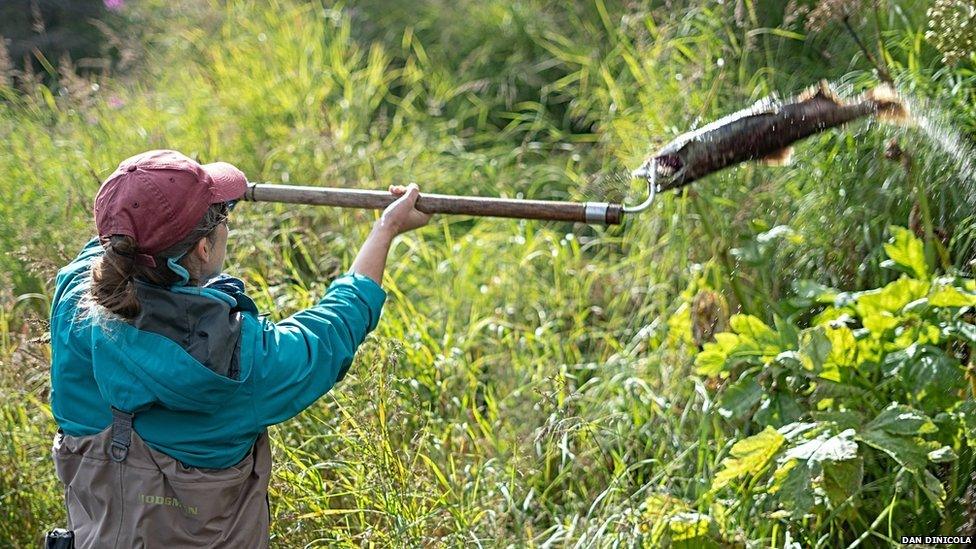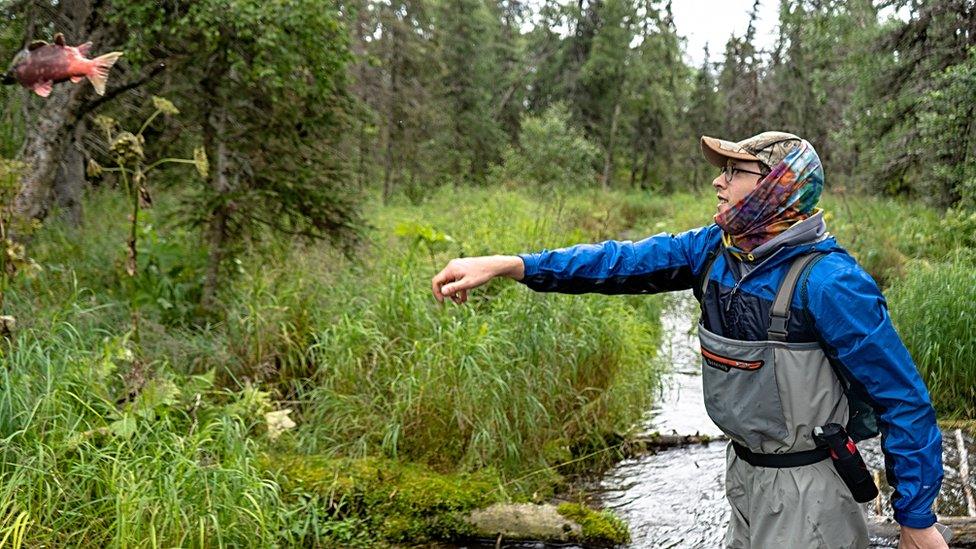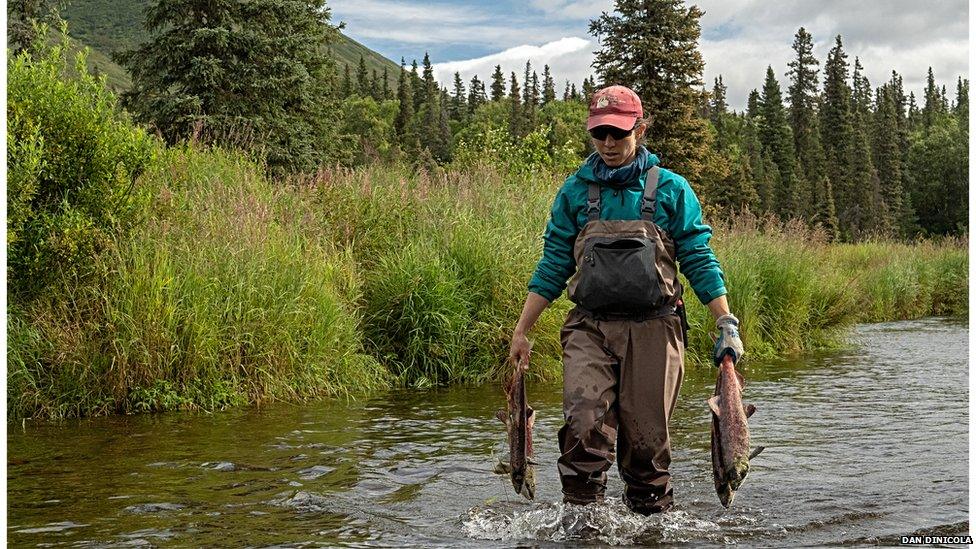Tossing dead salmon is good for plants
- Published

For more than 20 years, students in a small corner of north-west US have been tossing dead fish
Never mind silver bells and cockleshells, Mary should have tossed dead fish to help her garden grow.
A team of US researchers has found that sockeye salmon carcasses has helped boost tree growth by up to 20%.
Over a 20-year period, students from the University of Washington tossed dead fish from a stream on to a river bank.
Data shows the nutrients from the rotting flesh boosted growth in the area's trees.

Pacific salmon die shortly after returning to rivers to spawn
What did the scientists do?
For two decades, students taking part in a long-term study on who/what was eating sockeye salmon in a stream in Alaska have been tossing fish carcasses on to one river bank in order to avoid double counting them during surveys.
"We would find carcasses on both sides of the stream, explained Prof Tom Quinn, who supervised the study.
"But we always tossed the carcasses on one side of the stream so effectively we were reducing the density of carcasses on one side and increasing the density of carcasses on the other.
"It was something of a natural fertilisation experiment."

In order to avoid counting carcasses twice, dead fish were hurled to a river bank
What did they find?
After taking samples from the surrounding trees of Hansen Creek, the scientists found that the fish carcasses (almost 300 tons over the 20-year period) had affected the growth rate of the trees.
"We took cores from live trees that we estimated to be at least 40 years old," observed Prof Quinn.
"We saw that the effect of the carcass manipulation was to accelerate the growth on that side.
"There was a significant increase in the growth of the trees on the side that we fertilised relative to how well they have been doing prior to the experiment."

Indigenous people have known for generations about the benefits fish carcasses provide
Why does it matter?
Prof Quinn said the study highlighted the importance of long-term studies when observing ecological changes or influences because changes, such as dead fish fertilising soil, would not be detected in shorter studies.